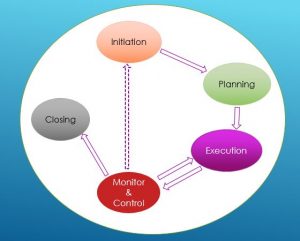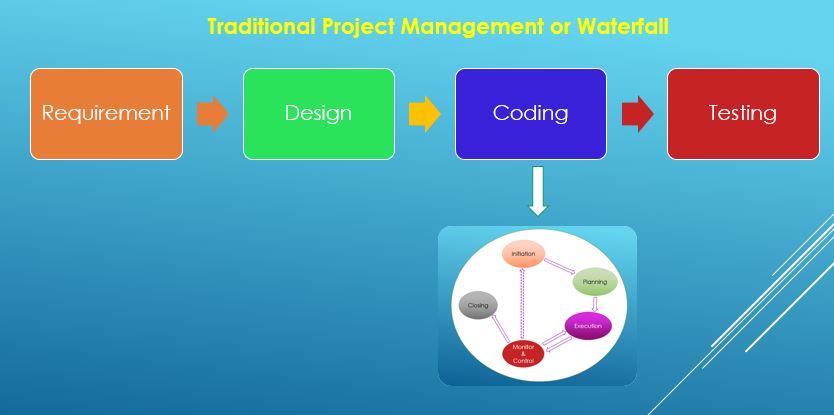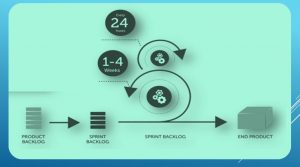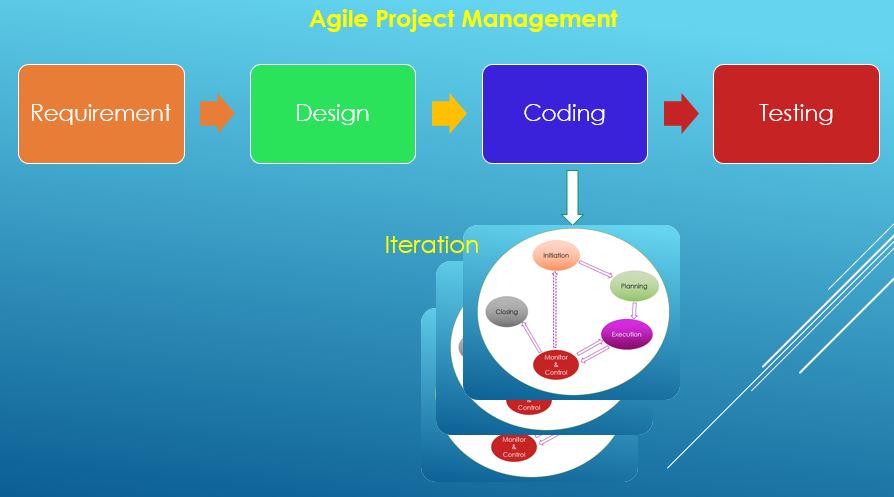In this article we will talk about what is traditional project management ?, what is agile project management? and difference between traditional and agile project management.
What is a project?
A project is a temporary endeavor undertaken to achieve unique product or services.
Project management is the application of knowledge, skills, tools & technique to the project activities to meet the project requirement. Project management enables the organization to execute the projects effectively & efficiently.
Project Management Process Groups:
A classic project management Processes are grouped together in to five process groups. to differentiate between traditional and modern project management we should know about the project management process first. The Logical grouping of project management processes to achieve specific project objectives are called Project Management Process Groups. Below are the five process groups and basic principles of traditional project management.
- Initiating Process group: The processes part of initiating process group are performed at the time of new project or new phase of existing project.
- Planning Process group: The processes part of planning process groups helps in defining the plan for the project like defining scope, planning for schedule, cost, procurement, communications etc. This helps in defining the course for the project to achieve its objectives.
- Executing Process group: The processes in executing process group is performed to complete the defined work as per plan to satisfy the project stakeholders.
- Monitoring & Controlling Process group: As part of monitoring & controlling process group, the performance of project is tracked, monitored, reviewed & controlled. The variation from plan is derived & identify what changes are required to bring back the project on track.
- Closing Process group: The processes part of closing process group are done at the time of closing the project to close the project formally.
Traditional project management:
Traditional project management or Waterfall project management is mainly used on projects where activities are completed in a sequence and there are rarely any changes.
The concept of traditional project management is based on predictable experience and predictable tools. Each project follows the same lifecycle, which includes five stages: initiating, planning, executing, controlling, and closing.The ultimate goal of waterfall project management was to make sure all the tasks are carried out in a predetermined orderly sequence.
The waterfall approach is linear where all the phases of a process occur in sequence. It depends on predictable tools and predictable experience. Every project follows the same life cycle which includes the stages.
Gantt chart is the most important technique in traditional project management. Gantt chart gives you a simple overview of a project. It is one of the most useful ways of presenting tasks and activities of the project on a timeline.
Agile project management and agile software development have become hot topics in recent years, however Agile might be the best approach for some projects, other projects still require the rigor of a more traditional approach.
The entire project is planned upfront and any scope for changing requirements is not appreciated. Acceptance of changes is one of the major difference factor in traditional project management vs agile. We can also say agile as modern project management , let see how differ traditional project management vs modern project management .
What is Agile?
In simple terms agile meaning is able to move quickly and easily.
Agile software development is an approach to software development under which requirements and solutions evolve through the collaborative effort of self-organizing and cross-functional teams and their customer(s)/end user(s).[1] It advocates adaptive planning, evolutionary development, empirical knowledge, and continual improvement, and it encourages rapid and flexible response to change.
Scrum is a type of agile methodology. It is essentially an agile process framework.Scrum follows a set of fixed length iterations in which the product is developed. Each of these iterations are called as Sprint. Typically, each sprint is fixed somewhere within 1 week to 4 week.
Agile Project Management:
Agile project management is an approach based on delivering requirements iteratively and incrementally throughout the project life cycle.Agile approach shifts more quickly to execution and spends less time on planning.The basic concept behind Agile software development is that it delves into evolving changes and collaborative effort to bring out results rather than a predefined process.Scrum and Kanban are two of the most widely used Agile frameworks.Agile approaches empower those involved, and agile philosophy concentrates on empowered people and their interactions and early and constant delivery of value into an enterprise and this is one of the main difference between agile and waterfall project.
Why Agile ?
Some of the key benefit from project management Agile Methodology is below.
- Adaptability
- Time-to-market
- Reduced costs
- Customer satisfaction
Agile vs Waterfall:
It is not always not necessary to use agile approach. A blended approach can bring synergy utilizing best of both Agile and Waterfall.
Key difference between agile vs traditional project management are
- Waterfall is used when project is relatively familiar where as agile is used when project is relatively unfamiliar.
- TPM or Traditional Project management is used when project have defined clear scope and deliverables where are Agile is used when there are evolving changes in scope.
- TPM is more of negotiation with customer where are Agile is a collaboration with customer.
As part of this tutorial we have covered agile project management vs project management . We will talk more about scrum and Kanban in coming tutorials.



